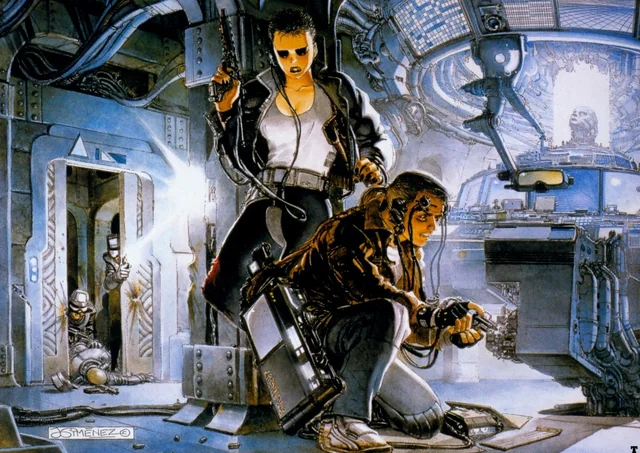In 1982, Ridley Scott’s Blade Runner posed the question of the essence of humanity through the use of replicants which are lifelike androids whose creators were not able to strongly define their personhood. Two years later, William Gibson’s Neuromancer expanded the question into the digital landscape, where the human experience is processed through the logic of artificial intelligences and the vastness of cyberspace. Both works confront humans with a daunting truth: the more boundaries are pushed with technology, the blurrier the line between human and machine becomes.
For example, in the movie Blade Runner, the film revolves around Rick Deckard, a man tasked with “retiring” replicants—beings indistinguishable from humans except for their lack of biological birth. The replicants, especially Roy Batty, question the nature of their existence. Roy’s final monologue, also known as the “Tears in Rain” speech, reveals an inner life so rich that the audience is left wondering: If Roy can feel, dream, and regret, what truly separates him from us? His desire for more life, more time, echoes a fundamentally human fear—the fear of mortality.
On the other hand, in Neuromancer, Case, the protagonist, navigates the dark, shadowy digital landscape of cyberspace. Cyberspace is a place where the human consciousness can be uploaded, manipulated, even fractured. Much like replicants in Blade Runner, Case is caught between worlds, between the flesh and blood reality of his being and the virtual existence he embraces in the matrix. The AIs that Case interacts with such as Wintermute, defy the boundaries of human understanding, presenting a new kind of entity that is both more and less than human. This journey through cyber space forces Case to tackle the fragmentation of identity, where personal freedom is lost in digital manipulation.
Both works converge on one profound idea: that artificial beings, whether replicants or AIs, are mirrors held up to humanity. Blade Runner makes this personal, focusing on the individual quest for identity, while Neuromancer explores the more abstract implications of consciousness and freedom in a digital age. However, in both, the question remains what makes us human? Is it our memories and emotions, or the mere fact of being alive? In these dystopian futures, technology doesn’t just shape society; it reshapes the very concept of personhood. As we navigate our digital age, where AI grows ever more sophisticated and the boundaries between our real and virtual lives blur, the questions posed by Blade Runner and Neuromancer feel more relevant than ever.

Published by